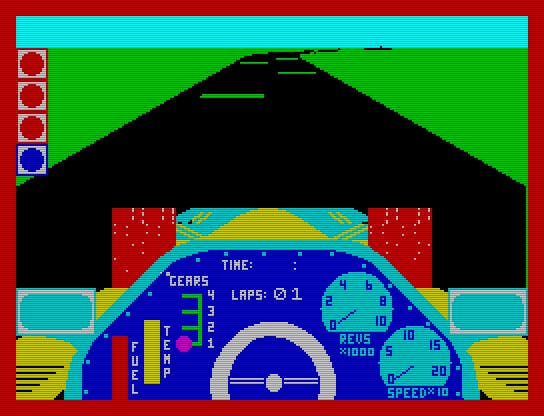Chequered Flag
Wheely innovative, but a bit tyresome.
Chequered Flag has a serious claim to being the first ever home computer driving game. Certainly in the sense of offering a 'behind the wheel' view of the track and attempting to accurately recreate the physics of wrestling an F1 car around a tight bend. Looking at the number of indebted titles knocking around, it's safe to say the genre took off.
In essence, Flag is a time-trial simulator. With no opponents on the road, the player is largely battling against his own driving skills. A selection of ten international tracks are available, ranging from relatively simple ovals to more outlandish shrivelled banana shapes and what appears to be a pair of pants. Once the preferred track and lap numbers are selected, the player chooses his car (the main differences being an automatic or manual gearbox) and takes to the tarmac.

Out on the open road, players have to keep an eye on their heat and fuel, find the racing line at corners and push for that record lap time. Chuck in an occasional pit stop and it feels like the straightforward F1 experience. Straightforward, that is, apart from the mysterious sabotage on the course. Strewn around various points are patches of oil, rocks and (most ominously) bits of broken glass. Damon Hill wouldn't have stood for this nonsense - but you have to.
The car movements feel convincing, especially for such an early effort. Utilising additional keys for 'harder' turning adds an extra dimension of control, and the chassis feels suitably weighty. The obstacles keep things vaguely interesting - though are no substitute for actual competitors. Repetition is the biggest problem here, with little to do except improve lap times after the initial buzz. As such, despite its incalculable influence, Chequered Flag no longer makes the podium.
